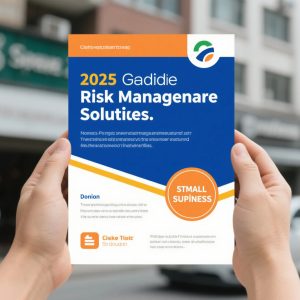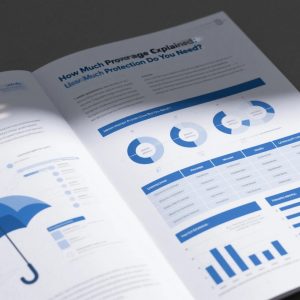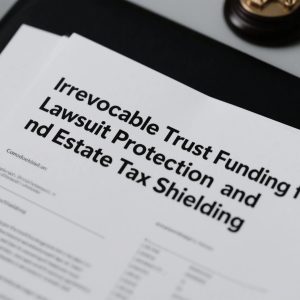Understanding Fraudulent Conveyance in Asset Transfers
The concept of fraudulent conveyance refers to the illegal transfer of assets designed to avoid paying creditors or hiding wealth from legal judgments. This practice has serious legal consequences under both state and federal laws. When individuals or businesses move property, cash, or other valuables with the intent to defraud, hinder, or delay creditors from collecting what they’re owed, courts can reverse these transfers and impose penalties. The Uniform Fraudulent Transfer Act (UFTA), adopted in most states, provides the legal framework for identifying and addressing such transactions. What makes a transfer fraudulent isn’t just the act itself but the underlying intent – the deliberate attempt to shield assets from legitimate claims.
To establish fraudulent conveyance law violations, courts examine several factors including the timing of transfers relative to debts incurred, whether the transfer was disclosed, and if the owner retained control over supposedly transferred assets. Transfers made while facing lawsuits or when insolvent raise immediate red flags. The legal system distinguishes between actual fraud (intentional deception) and constructive fraud (transfers that leave insufficient assets to meet obligations). Both types can result in transferred assets being pulled back into the debtor’s estate for creditor distribution. Understanding these distinctions forms the foundation for compliant asset protection compliance strategies that don’t cross legal boundaries.
Identifying Red Flags in Questionable Asset Transfers
Certain transaction characteristics automatically attract scrutiny under fraudulent conveyance law. Transfers to insiders like family members or business partners at below-market prices often indicate problematic intent. Similarly, shifting assets while anticipating litigation or immediately after losing a court case demonstrates clear timing issues. Other warning signs include creating secret agreements to maintain benefits from transferred property or making inconsistent disclosures about assets to different parties. The retention of asset use or control after purported transfer – such as continuing to live in a “sold” home without paying rent – undermines any claim of legitimate transaction.
The financial context surrounding transfers proves equally important in risk management compliance evaluations. Courts examine whether the transferor received reasonably equivalent value – meaning the exchange was fair and arms-length. When assets move without proper compensation or in exchange for worthless considerations, the transaction appears designed to deplete available resources rather than conduct legitimate business. Debt-to-asset ratios before and after transfers help establish if the move rendered the entity insolvent or left it with unreasonably small capital to operate. These financial metrics become critical evidence when assessing transfer validity.
Legal Strategies for Compliant Asset Protection
Proper trust structuring advice can create legitimate asset protection without violating fraudulent transfer statutes. Irrevocable trusts established well before any creditor issues arise typically withstand scrutiny because they demonstrate planning rather than reaction. The key lies in timing and transparency – these tools work best when implemented during periods of financial stability rather than as emergency measures when lawsuits loom. Domestic asset protection trusts (DAPTs) in permitted states offer another compliant option, provided they’re funded with clear documentation and proper valuation of transferred assets.
Business entities like limited liability companies (LLCs) and corporations, when properly maintained, provide statutory asset protection compliance benefits. The critical factor involves respecting corporate formalities – maintaining separate accounts, holding regular meetings, and avoiding commingling of personal and business assets. These structures work because they’re recognized legal separators rather than devices to hide ownership. Multi-layer protection using holding companies and operating entities can be effective when each component operates legitimately with proper capitalization and documented transactions. The distinction between strategic planning and fraudulent intent often comes down to paperwork and timing.
Timing Considerations in Asset Transfer Planning
The chronology of asset movements plays a pivotal role in fraudulent conveyance law analysis. Transfers made within statutory look-back periods – typically four years but extending longer in some jurisdictions – face automatic presumption of improper intent if they precede creditor actions. This creates what’s known as the “race to the courthouse” dilemma, where the sequence of transfer versus claim filing determines legality. Proactive planning years before potential liabilities materialize remains the only reliable method to avoid this timing trap. Last-minute asset shuffling rarely survives judicial review regardless of the transfer mechanism employed.
Documentation quality directly impacts timing assessments in risk management compliance. Properly dated contracts, contemporaneous appraisals, and filed transfer taxes create evidence of legitimate planning. Backdated documents or sudden flurries of activity after receiving litigation threats undermine credibility. Payment trails showing actual consideration changing hands (not just promises) strengthen transfer validity. Courts particularly examine whether normal business patterns existed before the challenged transfer or if the transaction represented abnormal behavior for that party. Consistent documentation practices over time help demonstrate legitimate intent rather than reactive asset hiding.

Valuation Challenges in Asset Transfer Disputes
Accurate asset appraisal forms the cornerstone of defensible transfers under fraudulent conveyance law. Overvaluing retained assets while undervaluing transferred property constitutes a classic fraudulent pattern. Professional third-party valuations using standard methodologies carry significantly more weight than owner estimates, especially for complex assets like intellectual property or privately held business interests. The concept of “reasonably equivalent value” requires honest assessment of what changed hands in the transaction – whether cash, services, or assumption of liabilities. Skewed valuations that disproportionately benefit the transferor raise immediate red flags.
Special consideration applies to intangible assets in asset protection compliance scenarios. Transferring patents, trademarks, or copyrights requires particular documentation care because their valuation often involves projections rather than concrete metrics. Royalty streams, licensing history, and market comparables must support assigned values. Similarly, accounts receivable assignments need clear terms about collection rights and responsibilities. The more subjective the asset’s value, the more robust the supporting documentation must be to prevent challenges. This becomes especially critical when dealing with assets that constitute major portions of the transferor’s net worth.
International Asset Transfers and Fraud Risks
Cross-border movements introduce additional complexity under fraudulent conveyance law. Foreign trusts or entities don’t automatically provide protection – U.S. courts can still order repatriation of assets if they find fraudulent intent. In fact, international transfers often draw heightened scrutiny due to the perception they’re designed to place assets beyond legal reach. The key compliance factors involve demonstrating legitimate non-fraud reasons for offshore planning (such as foreign operations or international tax planning) and maintaining transparency through proper reporting. Hiding accounts or failing to disclose foreign holdings typically backfires by creating presumption of fraudulent intent.
Effective trust structuring advice for international situations emphasizes dual compliance – meeting both U.S. legal standards and the host country’s requirements. Jurisdictions with strong rule of law and transparency frameworks generally produce better long-term protection than secrecy-focused havens. Documented business purposes for foreign entities, clear banking trails, and proper tax filings all contribute to demonstrating legitimate intent. The worst scenarios involve last-minute transfers to obscure jurisdictions with no prior connection to the asset owner – these almost invariably get unraveled in litigation. Consistent international planning integrated with overall wealth management stands the best chance of withstanding challenges.
Best Practices for Legally Sound Asset Transfers
Several core principles guide compliant transfers under asset protection compliance standards. First, maintain adequate remaining assets to meet known and reasonably anticipated obligations after any transfer. Second, document legitimate non-fraud purposes for transfers such as estate planning or business reorganization. Third, ensure all transactions include fair market value consideration and proper paperwork. Fourth, avoid preferential transfers to insiders that disadvantage other creditors. Finally, implement planning during periods of financial strength rather than when liabilities crystalize. These practices collectively demonstrate good faith rather than fraudulent intent.
Professional involvement enhances risk management compliance in transfer planning. Attorneys create privileged documentation of intent, while accountants ensure proper valuation and financial reporting. Financial advisors can structure transactions to meet multiple objectives without crossing legal lines. The key lies in engaging these professionals early – not after problems emerge. Contemporaneous professional advice carries far more weight than after-the-fact justifications. Regular legal audits of asset structures help identify potential vulnerabilities before they become crises, allowing for proactive adjustments that maintain both protection and compliance.
Common Mistakes That Trigger Fraudulent Transfer Claims
Several recurring errors undermine otherwise legitimate legal transfer of assets. First is the “title only” transfer where ownership supposedly changes but all practical benefits remain with the original owner. Second involves circular transactions where assets eventually return to the transferor through indirect paths. Third is the use of nominee owners who secretly agree to follow the transferor’s directions. Fourth includes transfers conditioned on future events that effectively maintain control. Finally, failing to properly notify creditors of asset movements creates presumption of concealment. Each of these patterns invites court intervention and potential reversal.
Behavioral factors also influence fraudulent conveyance law determinations. Sudden changes in longstanding financial patterns without clear explanation appear suspicious. Inconsistent treatment of similar assets – protecting some while leaving others exposed – suggests selective shielding rather than comprehensive planning. False statements to creditors about asset ownership or location compound problems by adding fraud claims to transfer challenges. Perhaps most damaging is the destruction or concealment of financial records related to transfers, which courts interpret as consciousness of guilt. Transparent, consistent financial practices provide the best defense against such allegations.
Emerging Trends in Fraudulent Transfer Litigation
Recent legal developments have expanded fraudulent conveyance law applications in novel contexts. Cryptocurrency transfers now face heightened scrutiny due to their potential anonymity, with courts increasingly willing to trace blockchain transactions. Same-day funding of protective trusts followed by immediate creditor claims now routinely get reversed as transparently fraudulent. Piercing the veil of series LLCs has become more common when used as pure asset shields without legitimate business purposes. These evolving interpretations emphasize that form must match substance in asset protection strategies.
Technology also impacts risk management compliance practices. Digital asset tracking tools allow creditors to identify suspicious transfer patterns more easily. AI-assisted document review flags inconsistencies in transfer paperwork that might have previously gone unnoticed. Blockchain analysis firms specialize in tracing cryptocurrency movements across wallets and exchanges. These technological advances mean historical fraudulent transfer techniques become detectable faster, making proper structuring and timing even more critical. The compliance response involves maintaining even more rigorous documentation and ensuring all transfers can withstand high-tech scrutiny.
Integrating Asset Protection with Overall Financial Planning
Effective trust structuring advice always considers the complete financial picture rather than isolated asset movements. Protection strategies should align with estate plans, business succession goals, and investment objectives to demonstrate integrated planning. For example, a family limited partnership might simultaneously achieve asset protection, generational wealth transfer, and investment management benefits when properly structured. This multifunctional approach appears far more legitimate than single-purpose transfers implemented amid creditor threats. Comprehensive planning also allows for natural timing – implementing structures as part of life events like retirement or business sales rather than legal crises.
The psychological dimension of asset protection compliance shouldn’t be underestimated. Panic-driven decisions during litigation stress often produce flawed transfers that courts later reverse. Methodical planning during stable periods allows for calm consideration of all options and consequences. This mental approach naturally leads to better documentation, more reasonable valuations, and transactions that serve multiple legitimate purposes. Perhaps most importantly, it creates the temporal separation between planning and potential liabilities that forms the best defense against fraudulent transfer claims. True asset protection emerges from foresight rather than fear.





